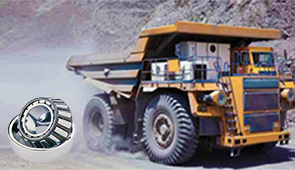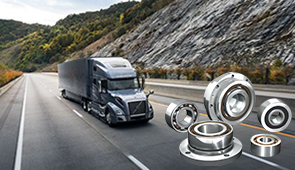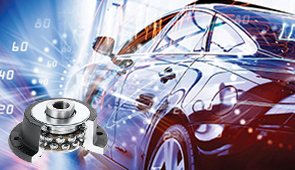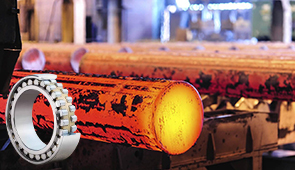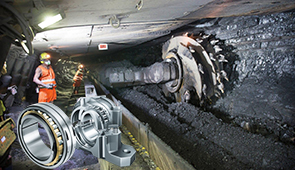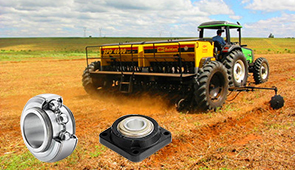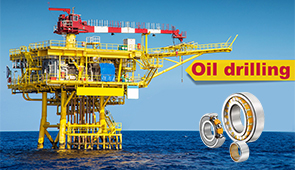How Much Does Ball Bearing Replacement Cost? Bearing Experts Verify
Ball bearing replacement is a critical maintenance task for a wide range of machinery and vehicles, ensuring optimal performance and preventing extensive wear or failure of essential components. The cost of replacing ball bearings can vary significantly based on factors such as the type of bearing, the complexity of installation, the labor required, and whether the component is part of a larger assembly. Additionally, we will explore the factors influencing these expenses, offer insights into cost-saving measures, and discuss the importance of timely replacement to maintain operational efficiency and avoid costly repairs down the line.
What is the average cost to replace a wheel bearing?
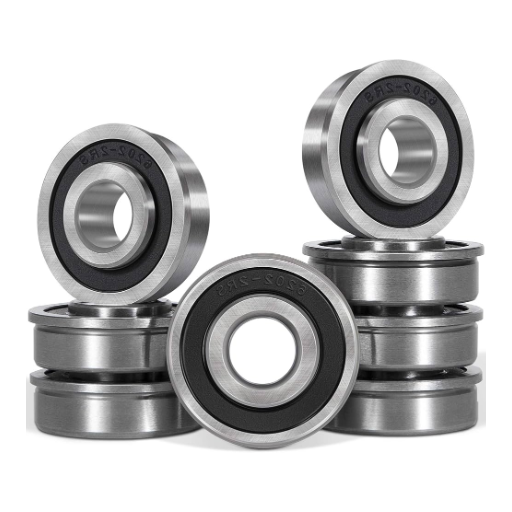
Front wheel bearing replacement costs explained
The average cost to replace a front wheel bearing is typically \$200 to \$500, depending on the make and model of the vehicle, the type of wheel bearing, and labor rates in your location. For vehicles with a press-in bearing, the labor costs will likely increase due to the installation’s increased complexity and the required specialized tools and expertise needed.
- Bearing Type: Ball, roller, or tapered roller. Each comes with its own set of durability and performance traits best matched to the vehicle’s engineering.
- Vehicle Specifics: Premium grade bearings are often found within high-performance or luxury class vehicles, which increases the cost.
- Labor Complexity: Replacement can be simplified on vehicles with hub assembly, while those using press-in bearings may need to have hydraulic presses or pullers which adds to the labor complexity.
- Condition of Adjacent Components: The damage of other components like the wheel hub or the axle can affect the overall price range.
In order to ensure proper vehicle maneuverability while also preventing any further harm to the suspension and drivetrain systems, which would potentially be more costly to fix, it is vital to address defective wheel bearings in a timely manner.
Ball bearing vs. roller bearing cost differences
It is important to account for various factors when assessing the expenses incurred in using ball bearings in comparison to roller bearings. Due to their simplified design, reduced size, and lesser requirement of material, costs associated with ball bearings are almost always lower. In contrast, roller bearings tend to be more expensive as they are meant to bear higher loads while withstanding greater wear in heavy-duty functions.
- Load Capacity: Ball bearings work best under lighter radial and axial loads, while roller bearings are better suited to manage heavier radial loads due to their greater contact surface area.
- Speed Limit: Unlike roller bearings, which are suited to lower rotational speeds, ball bearings increase in efficiency at higher rotation, allowing for use in high speed machinery.
- Durability: In quite a few situations, justifiable in certain use cases, bearing their higher initial cost, roller bearings also have the advantage of increasing longevity when it comes to heavy mechanical stress.
- Application-specific Requirements: For instance in the automotive field, tapered roller bearing are optimal for use in wheel hubs because of the higher thrust load. On the other hand, deep groove ball bearing are a better fit when used in general-purpose machines.
With these bearings, an optimal balance between load demands versus speed requirements and operating environment can be achieved, aiding both technical needs and cost constraints.
How much does a wheel bearing replacement typically cost by vehicle type
Many factors influence the total cost of a wheel bearing replacement, especially the make of your vehicle, the configuration of the wheel hub, and your local labor costs. For compactsthe, cost usually lies between $100 to $300 for each bearing, inclusive of parts and labor.
- Bearing Assembly Type: Sealed hub assemblies tend to carry greater replacement costs than other types of bearings since these need both the bearing and assembly replaced, as opposed to single bearing replacements.
- Labor Expenses: On average, bearing replacement requires about 1 to 2.5 hours, depending on how easy it is to reach the bearing within the vehicle.
- Load and speed rating: More robust bearings with higher radial load specifications needed in heavier vehicles like trucks increase the cost of these bearings still further.
- Material Quality: Top performing or off-road vehicles use bearings made from high ducts alloys steel, or ceramic hybrids which are more expensive, but greatly increase the longevity of these parts under extreme conditions.
Evaluate these expenses and technical details so that any vehicle type can be serviced optimally and economically.
How do I know if my wheel bearings need replacement?

Signs of a bad wheel bearing: wobble, hum, and noise
Through a combination of noticeable symptoms and technical diagnostics, a failing wheel bearing can be diagnosed. Notable symptoms are as follows:
- Wobble: A physical sensation of wobbling or looseness in the wheels, which can be felt while driving faster or taking corners. This sensation may point to looseness, supportable play, and bearing, and is softness beyond the tolerant limits of the manufacturer.
- Humming or Growling Noise: Unbearable sounds of low or high growl, rumble, or a combination of these emanate from the wheel and are felt to increase in volume with an increase in speed. This form of noise is a result of faulty wear of the bearing or in cases where there is a flaw relative to the raceway of the bearing and, hence, loose movement of the turning parts.
- Uneven Tire Wear: Irregular forms or excessive wearing out of the tire tends to signal a bearing that is faulty, though faint. This is due to maladjustment of the wheel alignment that results from bearing rot.
- Heat Generation: A wheel bearing that is in bad condition will overheat while in motion. Confirmation can easily be made through infrared temperature readings where the synthesizing accurately measures beyond average operational ranges, which are within 120-150 degrees Fahrenheit, 49-65 degrees Celsius for numerous automobiles.
Correct diagnosis depends on inspection by a qualified personnel using tools like dial indicators for play measurement, infrared thermometers to detect heat, and chassis ears for noise source isolation. To prevent damaging adjacent components such as hubs, axles, and suspension systems, timely replacement is vital.
Can a damaged wheel bearing affect brake and rotor performance?
Indeed, a wheel bearing that is out of spec can have negative effects on brakes and rotors. A loose wheel bearing can create excessive movement of the wheel assembly, resulting in its rotational parts wearing out faster (and unevenly) than normal. This can also result in misalignment on how the brake pad contacts the rotor, which means that the brake will not work correctly, leading to longer stopping distances. Moreover, a worn-out bearing will create frictional heat, which may be conducted to the brakes can cause the brakes to fade or the rotor to warp.
- Rotor Runout Tolerance: Defects, accidents or wear can accumulate and result to misaligned wheel bearings supporting the wheel can create looseness in the bearings which can cause the rotor to spin off axis unaided, which can be commonly above 0.002″ (0.05 mm) and 0.005″ (0.13 mm).
- Operating Temperature Range: Inadequately controlled bearings can be too hot, above 120-150 degrees Fahrenheit (49-65 degrees Celsius), and cook rotors which can really mess things up for the brake system.
- Braking Force Distribution: Damage to the bearings can interfere with the proper allocation of the braking force during deceleration and make it inefficient in stopping the vehicle.
Effective diagnosis and reprogramming are very important so that the car can be safely used without damaging the brakes any further.
Dangers of driving with a failing wheel bearing
If you operate a motor vehicle with a defective wheel bearing, you are subjected to high risks of safety issues, and the possibility of serious breakdowns is very likely.
- Risk of Wheel Separation: A worn wheel bearing can create too much slack in a hub assembly for it to be functional. Because of this, the wheel may oscillate and possibly detach while being driven at extremely high speeds. When lateral runout is greater than the acceptable level (approximately 0.05 millimeters), this scenario is likely to take place.
- Deficiency of the Braking System: One admittedly inefficient wheel bearing may allow for the alignment between the caliper and the rotor to be misaligned. This may cause uneven stopping or nauseating brake pedal vibration. Misalignment results in a decrease in efficiency and can lower the efficiency ratio below the 70% mark, which is the bare minimum needed.
- The Impact of Heat and Friction: The friction caused by the worn bearings leads to overheating of the components. Bearings located at the hub suffer exceeding temperatures of 93 degrees Celsius, which is over 200 degrees Fahrenheit. The heat causes a breakdown of the lubricant, which leads to excessive deterioration of bearings and adjacent components.
- Loss of Vehicle Stability: Damage to the bearing may result in the loss of stiffness of the wheel-hub assembly, causing reduced stability while boarding it. This affects the vehicle’s cornering, stability, and steering performance in general, particularly the ease of executing sharp turns at higher speeds.
In these situations, proper diagnosis and proactive maintenance is a must. Scheduled checks should include trying the bearing endplay (normal values are 0.001-0.005 inches) and listening for any unusual noise or excessive movement that might indicate the failure of an internal component.
Can I save money on wheel bearing replacement?
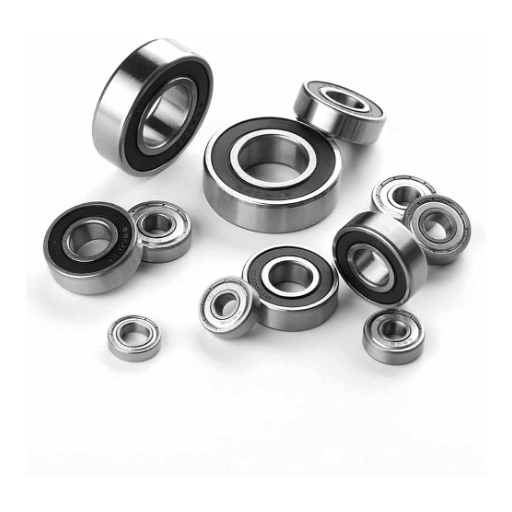
DIY wheel bearing replacement: is it worth attempting?
Doing a wheel bearing replacement on your own can be less costly, but it is necessary to have the right tools, skills, and knowledge for the process. One needs to be very accurate as failing to do so will result in further damage to the components or unsafe driving conditions. Some of the main considerations are:
- Torque Specifications: Make sure the bearing retaining nut is never lower than the manufacturer’s torque value and is handled with the right amount of force so that it is neither too loose (which can make the bearing to slip) nor too tight (which can cause overuse).
- Bearing Endplay: Confirm that the bearing endplay is within the accepted limit of 0.001- 0.005 inches for proper operation. This range of measurement signifies that it can be too loose or too tight, which results in impeded movement of the components.
- Lubrication: Use the right kind and mount of grease that can withstand high temperature to minimize the friction and heat build up on the components of the bearing assembly.
- Tools Required: Carrying out the work safely and effectively may require having a torque wrench, a bearing puller, snap ring pliers, and perhaps a hydraulic press.
People lacking these tools or an adequate amount of experience may run the risk of being unsafe due to poorly executed wheel bearing replacement.
Finding quality but affordable ball bearing replacements
While looking for cost-effective replacements for ball bearing, ensure that their performance combines efficiency and expense satisfaction by considering the following factors:
- Choice of Material: Having bearings manufactured from steel or ceramic gives them better durability towards heat and friction, which makes them long-lasting. For general use, 52100 chrome steel or stainless steel bearings are cheaper options, while for high-speed or high-temperature applications, ceramic bearings work best.
- Bearing RPM: Rotational speed is one of the main parameters and is measured in rpm. This should always be higher than the working speeds of the application to make sure that bearings don’t get overused and worn out.
- Sealing type: Contaminated environments require sealed or shielded bearings, otherwise the wear on the bearing can be substantial. Check if pre-lubricated bearings have the correct grease for the temperature range such as: lithium grease for standard use or industrial high temp grease.
Thoughtfully analyzing these factors makes it easier to pick ball bearings that offer the best performance for the least amount of money. Moreover, purchasing from well-known manufacturers and suppliers usually provides a certain level of quality assurance and reliability over long periods, minimizing the chances of unforeseen malfunctions.
When to replace wheel bearings preventively to avoid additional costs
Having work on wheel bearings before problems arise will prevent the vehicle from being unsafe, not operating at its full capacity and protecting more expensive features from suffering damage. It is often helpful in determining if the bearing needs service based on how far the vehicle has gone, the weather where the vehicle is driven, and other indicators like how much work the bearing has already done. For most people who do a lot of driving, it is advisable to check the bearings after driving 100,000 miles, however, this will change with the type of vehicle that is driven and the environment it is operated in.
- Abnormal Noises and Movement: Signs such as unusual scooping or humming noises and vibrations through the steering wheel and vehicle structure suggest the vehicle’s bearings might be damaged or extensively worn.
- Too Much Movement: Measure both axial and radial movement. If the movement exceeds 0.002 inches (0.05 millimeters), then the bearing is likely wearing out.
- Temperature: Bearings that have been excessively worn create high friction which increases the operating temperature and causes lubricant chemicals to deteriorate faster and thus damaging the bearings.
- Grease Type: Evaluating grease and looking for evidence of destruction or contamination is needed. If grease is too little or too dirty then it performance bearing needs to be sacrificed.
- Seals: Any evidence that shows the seal has worn out and will allow dirt, debris, and water access should be examined for possibilities of causing bearing to wear out.
By considering these factors in periodic maintenance, you can reduce the chance of bearing failure, reduce downtime, as well as minimize secondary damage to other vehicle parts.
How long do wheel bearing replacements last?

Lifespan of new wheel bearing assemblies
In my opinion, the new assemblies of wheel bearings last around 85-100k miles. These new bearings can sometimes go past 100k miles depending on your driving style, how often you maintain your vehicle, and the condition of the roads where you live. Driving on a highway, for example, is much less demanding than rough terrain driving, and thus smooth driving tends to make vehicle parts last longer. Modern wheel bearings are built with tough materials, like hardened steel, along with a contamination-resistant design, making them more reliable than older designs.
- Design Limits: Exceeding the load the bearings are designed for will result in a breakdown in the long term.
- Speed: The bearings have an RPM limit on them. Consistently exceeding that limit will wear them down faster.
- Seals: High-quality sealed bearings will make sure that lubrication does not need to be filled for a long time, but damage to the seal will result in overheating.
Your wheel bearings will last much longer if you keep your vehicle maintained properly. Always check for signs like excessive noise, vibrations, or play. Remember to always use manufacturer parts as they will guarantee long term performance.
Warranty considerations for bearing replacement cost
While analyzing warranty coverage for the replacement of a wheel bearing, it is advisable to check the policy provided by the manufacturer or service provider. A warranty can be impacted by many factors, such as the mileage limit, duration of time, and the reason for the failure, whether it lies with the manufacturer or the external factors like poor installation or maintenance.
- Time and Mileage Limitations: Most warranties seem to cover bearing replacement up to a particular mileage (12,000–36,000 miles) or for a given period (1–3 years) post purchase. These limitations tend to differ across manufacturers and therefore should be validated against the maintenance records.
- Manufacturer Specifications: The Validity of a warranty is usually contingent upon the use of OEM (Original Equipment Manufacturer) parts.
- Authorized Installation: Warranty coverage is likely to depend on professional or manufacturer-certified installations. Not abiding by such factors can lead to the warranty being voided.
- Signs of Wear and Coverage Exclusions: Warranted damage from neglect (poor lubrication), outside environmental damage (water contamination), and exceeding the bearing’s rated load and velocity are most commonly excluded.
As a rule of thumb, always note down any maintenance or repair work carried out and give evidence of following the procedures when a warranty claim must be processed.
What’s the difference between front and rear wheel bearing costs?
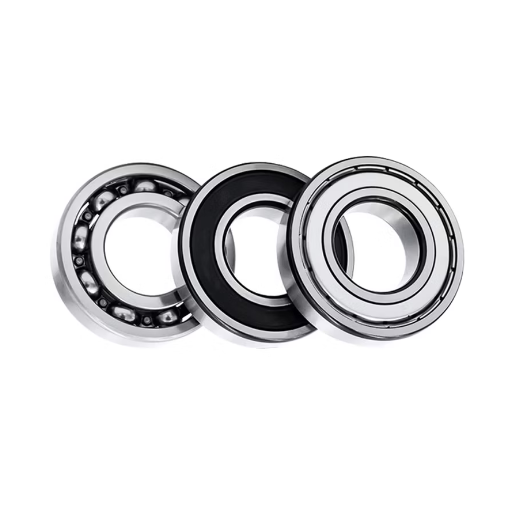
Why axle position affects wheel bearing replacement pricing
The position of the axle affects the cost of replacing the wheel bearing, owing to the cost associated with its design, accessibility, and the imposed load. Front wheel bearings get loaded under complex combination of moments since they work as both rotatory and steerage bearing. This requires more sophisticated bearing arrangements, such as angular contact bearings or tapered roller bearings which can bear large axial loads as well as radial loads. Therefore, replacing these parts can be at a higher cost.
On the other hand, rear wheel bearings do not work with as much stress because mostly they carry weight and allow rotation without the associated forces of steering. These bearings tend to be of simpler types, such as roller or ball bearings, which makes them cheaper, easier and faster to reach and replace.
- Load Handling Capacity: The overall strength and material of the front bearing’s design is sturdier because they have to deal with combined radial and axial loads.
- Bearing Type: Front constituents use angular contact or tapered roller bearings, while the rear ones are fitted with ball-type or cylindrical-type roller bearings.
- Maintenance Accessibility: Front axle systems tend to be more complicated and usually require the removal of other parts to be accessed, which leads to increased costs due to the additional labor.
- Replacement Complexity: Simpler bearing assemblies are commonly referred to as rear bearings because these parts can be replaced faster and at an economical price.
In the end, these differences in details account for the disparity in cost for the replacement of front and rear wheel bearings.
When both wheel bearings need to be replaced simultaneously
In cases where one side begins to show signs of wear, it is best practice to replace both bearings simultaneously, as the other is probably equally wor, given the average mileage and operating conditions. This approach optimizes engine balance and output, erasing the possibility of any malfunctioning failure on the other side.
- Load Specifications: Confirm that the new bearings correspond with the vehicle’s load ratings and that they are inline with the axle’s specs.
- Torque Settings: Preceding the manufacturer’s prescribed bolt and nut torque measurements during installation ensures adequate fit, which hinders premature wear from arising.
- Material Compatibility: Employ bearings that conform to OEM (Original Equipment Manufacturer) standards, which are usually made of premium steel or composite materials.
- Bearing lubrication: Adequate lubrication is essential, thus, the bearings must be thoroughly packed with automotive hero grease designed for high temperatures to prevent overheating and friction.
- Bearing Precise Alignment: All associated components, such as hubs and axles, must be aligned properly for optimal operation and bearing lifespan.
Outlining these factors guarantees strengthened mechanical reliability and efficiency in cost through the elimination potential mechanical failures alongside the risk of advanced uneven wear patterns in the future.
Frequently Asked Questions (FAQs)
Q: How much does it cost to replace a worn-out wheel bearing?
A: The cost of replacing a worn-out wheel bearing can vary depending on the make and model of your vehicle. On average, you can expect to pay between $150 and $500. The cost includes both parts and labor, but it’s worth noting that luxury vehicles or those with complex systems may incur higher charges.
Q: Why is it important to replace a worn-out wheel bearing?
A: Replacing a worn-out wheel bearing is crucial because driving with a bad wheel bearing can lead to further damage to your vehicle. Bearings allow the wheels to spin freely, and a faulty wheel bearing can affect the wheel hub and overall wheel assembly, leading to unsafe driving conditions.
Q: How can I tell if I need to replace my wheel bearings?
A: Signs that you may need to replace your wheel bearings include unusual noises coming from the wheels, such as grinding or humming, improper wheel alignment, or a noticeable wobble while driving. If you experience any of these symptoms, it’s best to have a mechanic inspect your vehicle.
Q: Can a worn-out wheel bearing affect other parts of my vehicle?
A: Yes, a worn-out wheel bearing can affect other components, such as the wheel hub and wheel assembly. If not addressed, it may also lead to improper wheel alignment and additional wear on your tires.
Q: What is included in the cost of replacing a wheel bearing?
A: The cost of replacing a wheel bearing generally includes the price of the part itself, which can be a steel ball or other types, and the labor charges from the mechanic. Depending on your vehicle’s make and model, you might also need to replace the entire hub assembly.
Q: How long does it take to replace a wheel bearing?
A: Replacing a wheel bearing typically takes about 1 to 2 hours per wheel, although this can vary based on the vehicle’s design and the mechanic’s experience.
Q: Is it possible to drive with a damaged bearing?
A: While it’s technically possible to drive with a damaged bearing, it’s not advisable. Continuing to drive with a faulty wheel bearing can lead to more severe issues, including a wheel seizing up, leading to a potential accident.
Q: Are wheel bearings covered under a new car warranty?
A: Wheel bearings are often covered under a new car warranty, especially if they fail prematurely. However, coverage can vary based on the warranty terms, so it’s important to check with your vehicle’s manufacturer or dealer.
UCTH213-40J-300 with Setscrew(inch)
CNSORDERNO: Normal-duty(2)
TOGN: UCTH213-40J-300
SDI: B-R1/8
SD: 2 1/2
UCTH212-39J-300 with Setscrew(inch)
CNSORDERNO: Normal-duty(2)
TOGN: UCTH212-39J-300
SDI: B-R1/8
SD: 2 7/16
UCTH212-38J-300 with Setscrew(inch)
CNSORDERNO: Normal-duty(2)
TOGN: UCTH212-38J-300
SDI: B-R1/8
SD: 2 3/8
UCTH212-36J-300 with Setscrew(inch)
CNSORDERNO: Normal-duty(2)
TOGN: UCTH212-36J-300
SDI: B-R1/8
SD: 2 1/4
UCTH211-35J-300 with Setscrew(inch)
CNSORDERNO: Normal-duty(2)
TOGN: UCTH211-35J-300
SDI: B-R1/8
SD: 2 3/16
UCTH211-34J-300 with Setscrew(inch)
CNSORDERNO: Normal-duty(2)
TOGN: UCTH211-34J-300
SDI: B-R1/8
SD: 2 1/8









